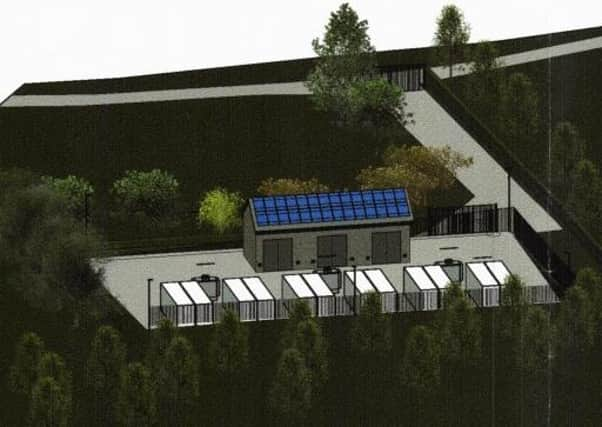Plan for battery energy storage in Banbridge


The application submitted by Bann Battery LTD concerns a 0.336 hectare site 170m West of 42 Ballydown Road, Banbridge
The proposal seeks to build a battery energy storage facility at lands extending from Banbrigde’s main substation and will see a battery energy storage system (BESS), lighting and closed-circuit TV columns erected.
Advertisement
Hide AdAdvertisement
Hide AdNew site fencing, ancillary development works, additional landscaping and overground and underground cabling linking to the proposal to Banbridge’s main substation will also be built at the site should the application be approved.
A planning and design statement submitted with the proposal notes the land is currently used as a large agricultural field and the owner of the land, a farmer, sees the proposal as a way to diversify farm revenue.
The proposed development is designed as a component of the national electricity grid that will help stabilise supply.
It will, according to the planning and design statement, “store electricity when there is surplus” in the system and discharge electricity at times of a deficit of generation.
Advertisement
Hide AdAdvertisement
Hide AdThe existing gate access to the field will be used, although it will be moved further back from the road to allow for the entrance and exit of lorries at the site.
The route of gravel lane in the field will also be utilised but it will be re-gravelled to form a permeable surface for access to the project site.
The statement notes Bann Battery Ltd will not only develop the site but “will own and operate the battery for a minimum of 25 years”.
The company’s aim is to use its “extensive industry experience” to create a battery that looks to the future.
Advertisement
Hide AdAdvertisement
Hide Ad“The energy industry is changing rapidly, fossil fuel powered stations are being superseded by renewable energy, leading to new challenges in delivering a secure sustainable electricity supply,” reads the planning and design statement.
“This challenge can be met by using innovative engineering and new sustainable technologies such as artificial intelligence.
“By implementing these strategies, we can ensure security of supply of electricity and provide the means to implement higher levels of non-synchronous renewable energy into the electricity grid.”